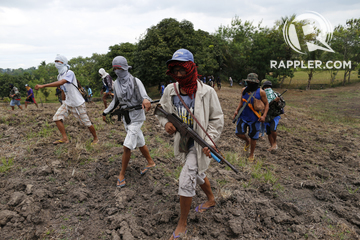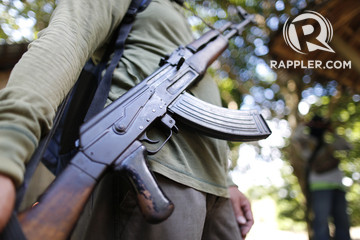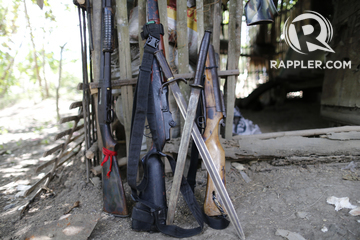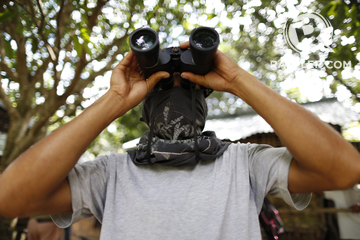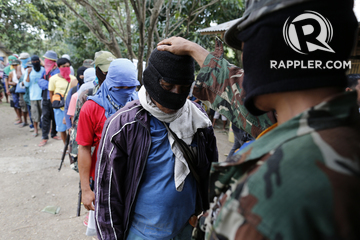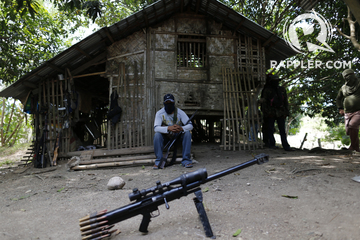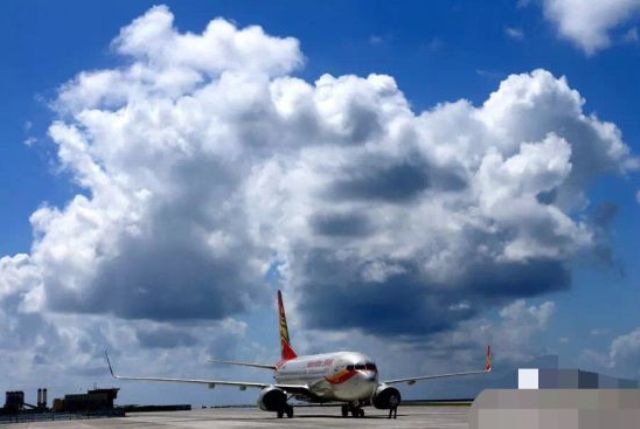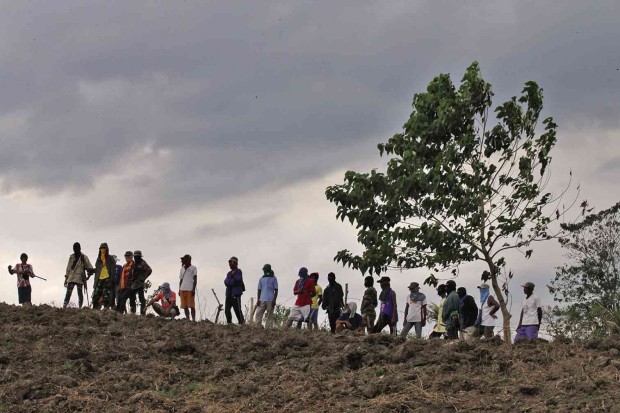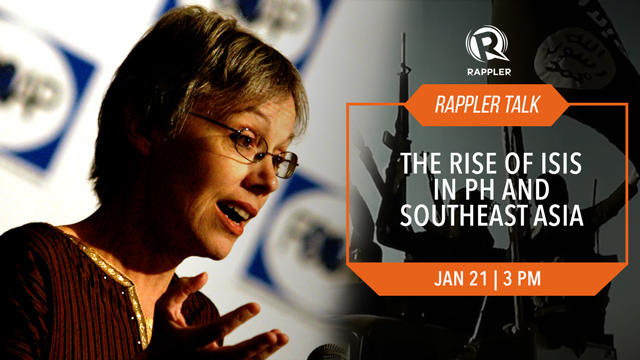A military
man who was caught in a drug buy bust operation yesterday midnight in Manila
Santiago confirmed that arrested Philippine Marines Col. Ferdinand Marcelino, who was caught with a Chinese national in a shabu laboratory in Sta. Cruz, Manila was active in anti-drug operations and is part of the Presidential Anti-Organized Crime Commission (PAOCC) office of Ochoa.
“Sometimes, Colonel Marcelino also reports directly to President Aquino himself,”
Marcelino who worked under
Marcelino was a former chief of PDEA’s Special Enforcement Service (SES) and a known anti-illegal drug crusader.
Nabbed along with Marcelino was Yan Yi Shou, 33, a Chinese national who introduced himself to the government operatives as a former PDEA interpreter.
The operation also resulted in the seizure of 60 kilograms of shabu with an
estimated street value of P300 million and the discovery of a shabu laboratory.
Reports showed that armed with a search warrant, joint elements of the PNP-Anti-Illegal Drugs Group (AIDG) and PDEA swooped down on a townhouse unit at No. 15, Block 17, Lot 6, Celadon Residences located at the corner of Felix Huertas and Batangas Streets in Sta. Cruz,
The townhouse unit turned out to be a shabu storage and a laboratory.
“It turned out however that the townhouse is a large scale clandestine laboratory. Seized during the operation were cans of methamphetaminehydrochloride or shabu weighing more or less 60 kilograms, laboratory equipment and chemicals used in the manufacture of shabu,” the PNP-AIDG said.
“The shabu was in the freezing stage and contained in four large plastic rectangular trays,” it added.
There, the police and PDEA operatives collared Marcelino and Shou.
PDEA director general Undersecretary Arturo Cacdac ordered an investigation on Marcelino, who was instrumental in PDEA’s 2008 busting of the so-called “Alabang Boys” composed of members of rich and influential families tagged in trafficking of illegal drugs. They were acquitted, however.
Marcelino has been reassigned from PDEA. It was gathered that he had just graduated from a Command and General Staff Course (CGSC) in
Navy spokesman Col. Edgard Arevalo said that the Navy has one Lt. Col. Ferdinand Marcelino in its roster but could not confirm if he was the same person now being investigated as a result of the drug sting.
Arevalo said that the Marcelino in the Navy roster is currently assigned as superintendent of the
Arevalo committed the Navy’s full cooperation to the PNP probe.
“These notwithstanding, the Navy commits its full cooperation in any investigation on the officer,” said Arevalo.
“PN does not condone any illegal activities of its members. If the person reported is indeed a member of the Navy and clearly in violation of our laws, it will cooperate actively in the implementation of the law,” he added.
Former PDEA man in a fix
The former PDEA chief said Marcelino was also behind the successful discovery of the biggest shabu laboratory in Camiling, Tarlac in 2012 where the bulk of illegal drugs amounting to P3 billion was caught along with six Chinese fugitives.
Marcelino was working as Director for Special Enforcement Service during
“The problem here, is if he discloses everything, it will blow the lid off other major operations that would place many at risk. It’s very unfortunate that all odds (are) against him, who will take care of him now? His life is endangered, if he keeps his mouth shut he’ll end up in jail, if he squeals for sure he’s dead,”
Meanwhile, Sen. Grace Poe, in a statement, expressed alarm over the arrest of Marcelino.
The press statement said Marcelino was “reportedly with the Intelligence Service of the Armed Forces of the Philippines (AFP), particularly with MIG 4 or Military Intelligence Group-4.”
”While I commend the PDEA for another successful raid, the possible involvement of a ranking military officer in the illegal drug trade is a cause for concern,” Poe said.
Poe, chairman of the Senate committee on public order and dangerous drugs, urged the Philippine National Police and the government prosecutors to investigate thoroughly the matter “with full transparency to get to the bottom of this.”
”This should send a strong message that no one is above the law,” Poe said.
”I also urge the AFP leadership to look into the matter seriously to ensure that no one from its ranks is involved in this illegal trade,” she added.
On the side of legislation, Poe said they had amended the Dangerous Drugs Act “to give it more teeth and make it easier to put the drug pushers, drug lords and their conspirators behind jail.”
”The law was amended by our committee in 2014 and hopefully, we are now feeling its positive effects in the fight against this illegal drugs menace,” Poe said.
Marcelino not in PNP watchlist
The raiding team consisted of operatives of the PNP-Anti-Illegal Drugs Group and PDEA led by PNP Anti-Illegal Drugs Group Legal and Investigation Division chief Roque Merdeguia.
Merdeguia said the suspects were arrested around 12:30 a.m. in a town house in Felix Huertas corner Batangas Streets, Sta. Cruz,
Merdeguia said based on the search warrant, the house serves as a storage area of illegal drugs but to their surprise, they discovered that it was actually a shabu laboratory.
Merdeguia said they were also surprised by Marcelino’s presence in the area since he never appeared in the intelligence radar of the PNP and PDEA and he is also not in the “watch list” of persons involved in illegal drugs operation.
Merdeguia said they will probe the activities of Marcelino to identify his ties with the arrested Chinese national and other persons involved in illegal drugs activities.
For his part, PDEA Director General Arturo Cacdac said since Marcelino was present in the clandestine laboratory area during the operation, he is now considered a suspect.
Cacdac who rushed to the area, ordered the investigation against Marcelino, who accompanied the Chinese national.
However, Marcelino denied involvement in the operation of the illegal drugs laboratory, explaining that he was doing intelligence work in the area.
”I suppose they know each other because they arrived in the area together. We need to charge him in court so that he can defend himself and prove his innocence,” Cacdac said.
Marcelino was dismissed from PDEA after his men revealed that he was planting pieces of evidence to supposed drug suspects.
The suspects will be charged for violation of Cases for violation of Section 8
and 11, Article II of Republic Act 9165 or the Comprehensive Dangerous Drugs
Act of 2002.
http://www.tribune.net.ph/headlines/marcelino-reports-to-palace



